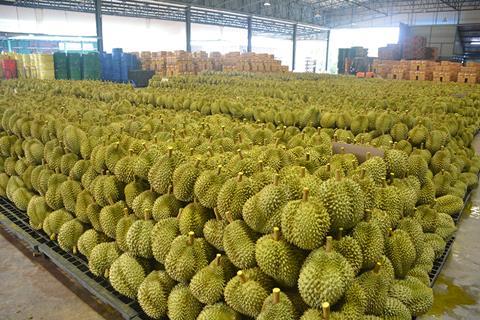Economic forecaster BMI expects South-East Asia to expand durian production as China’s demand continues to rise
China’s continued growth in demand for durian is expected to drive further export growth from South-East Asian producers, according to BMI Country Risk and Industry Research shared by Xinhua.

According to the publication, the Fitch research unit said it anticipates growing competition in the durian market, with significant growth in exports from Vietnam and Malaysia. BMI also expects this growth to challenge Thailand’s status as the largest global exporter.
“We expect Malaysia to become an increasingly important exporter of fresh durian to China thanks to the agreement (last year),” the forecaster said.
While Malaysia had already been exporting frozen pulp and whole frozen durian, it only gained access to China for fresh fruit in 2024.
Vietnam has also seen significant export growth since it gained access in 2022 and, while it has experienced a difficult start to 2025, this expansion is expected to continue.
BMI cited a couple of key factors driving Vietnam’s export growth in recent years. Adverse weather has impacted Thailand’s production and exports. Vietnam’s production is also counter-seasonal to China’s domestic season and it benefits from sharing a land-border.
“We believe this is an important development which will increase export revenue for the country, with increased processing and reduction of seasonal harvesting pressure,” said BMI.
Elsewhere, the Indonesian government has been increasing efforts to gain market access and Laos shows signs of continued investment in the durian supply chain.
Despite the growing volumes aiming to meet China’s demand, BMI still sees further potential in the market.
“We expect growth to continue in the medium to long term given the relatively low maturity of the market and the increasing popularity of the fruit,” it said.
The research house also saw the fruit remaining relatively unaffected by potential changes in consumer purchasing power given its premium placement.



